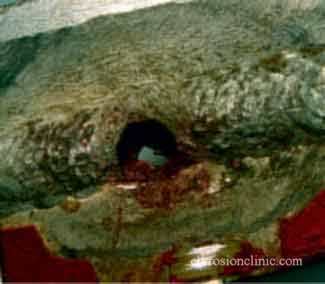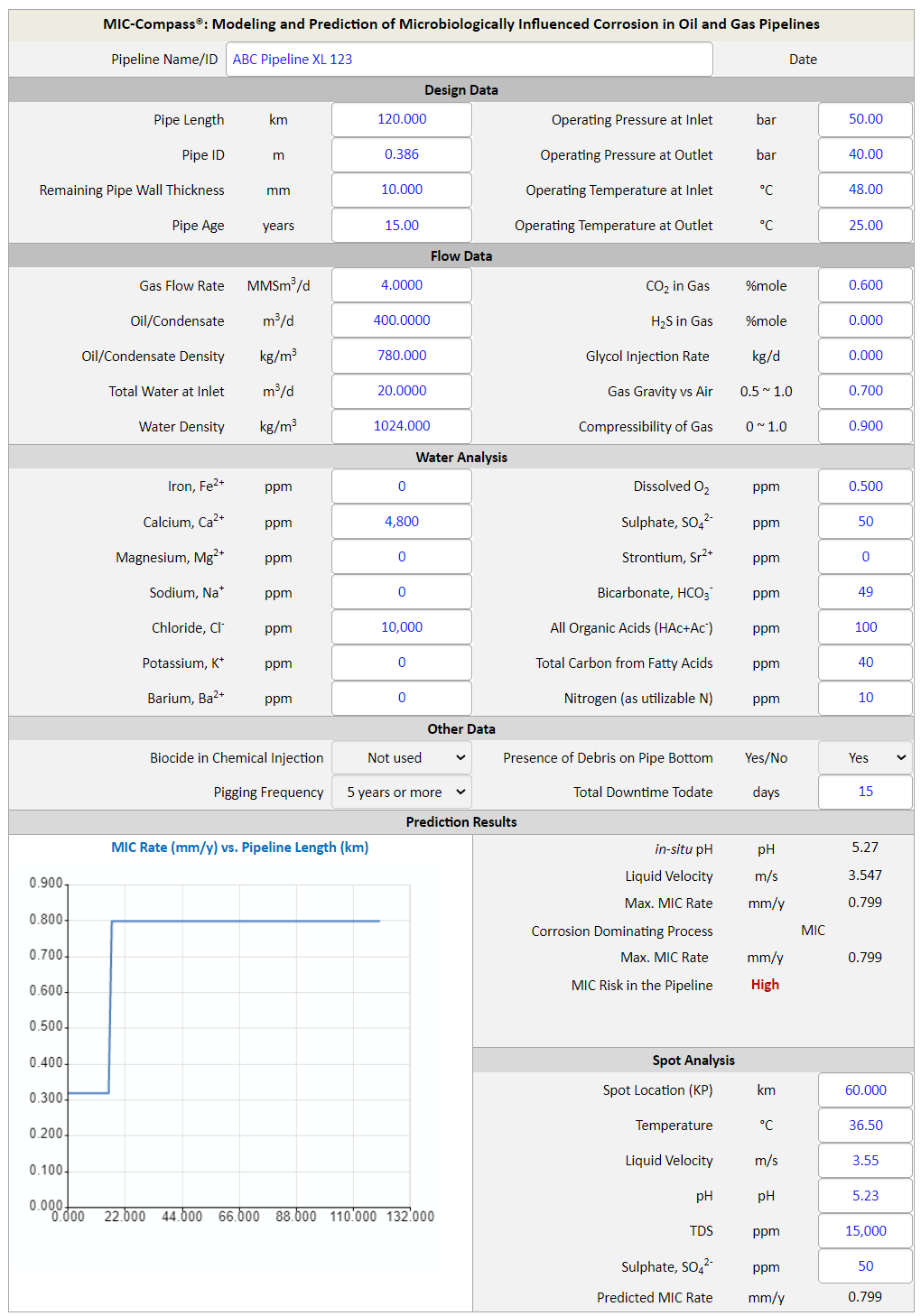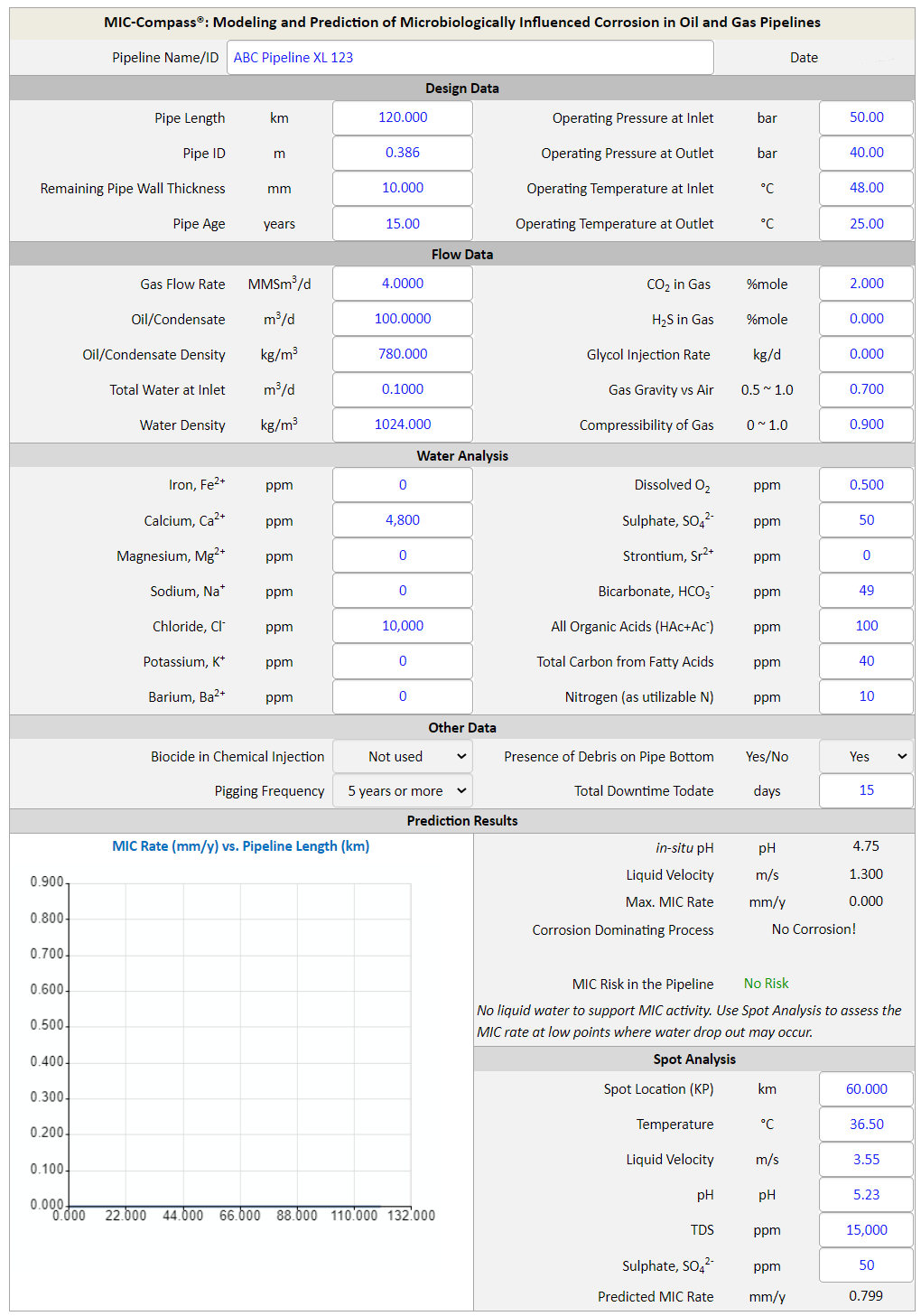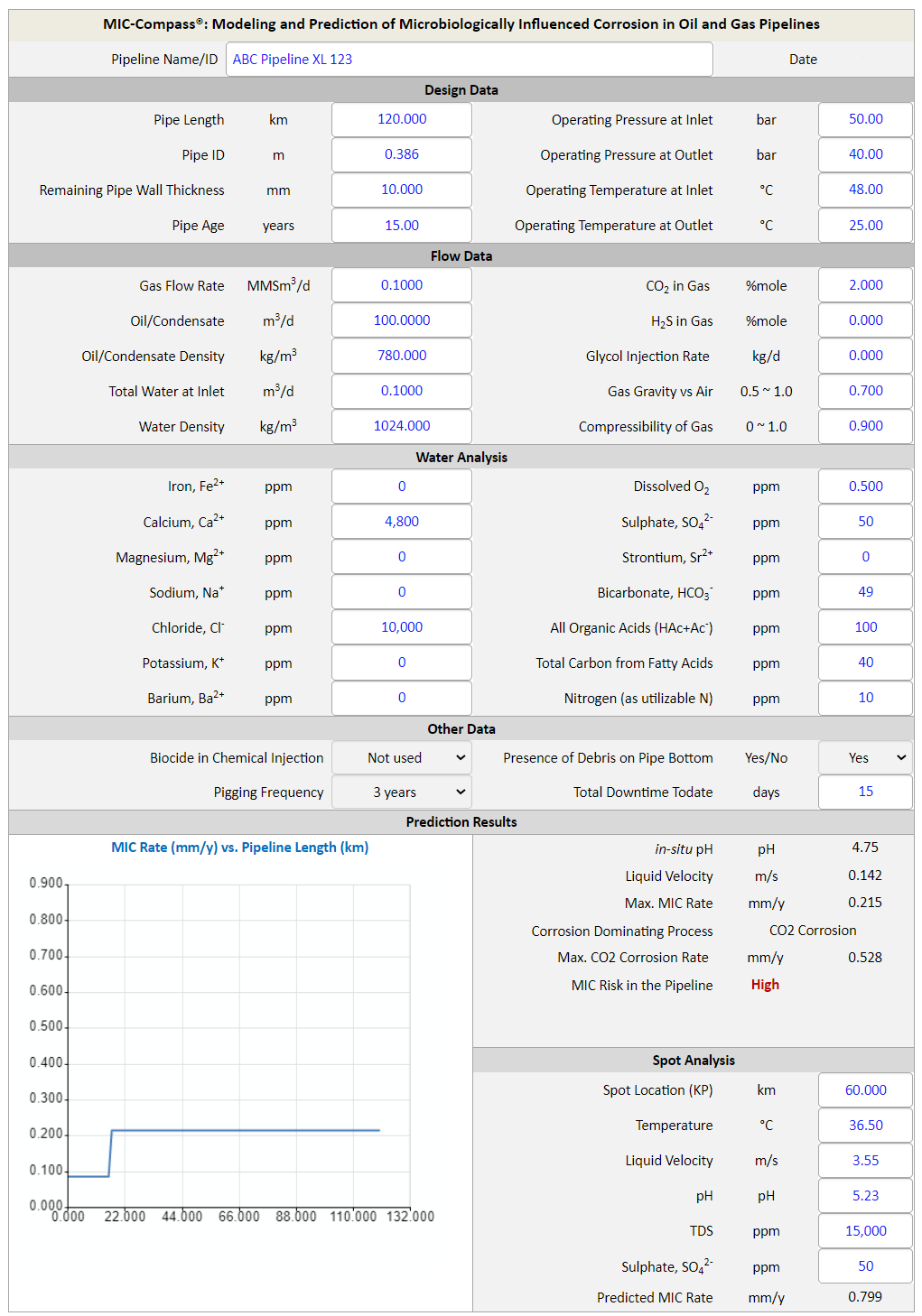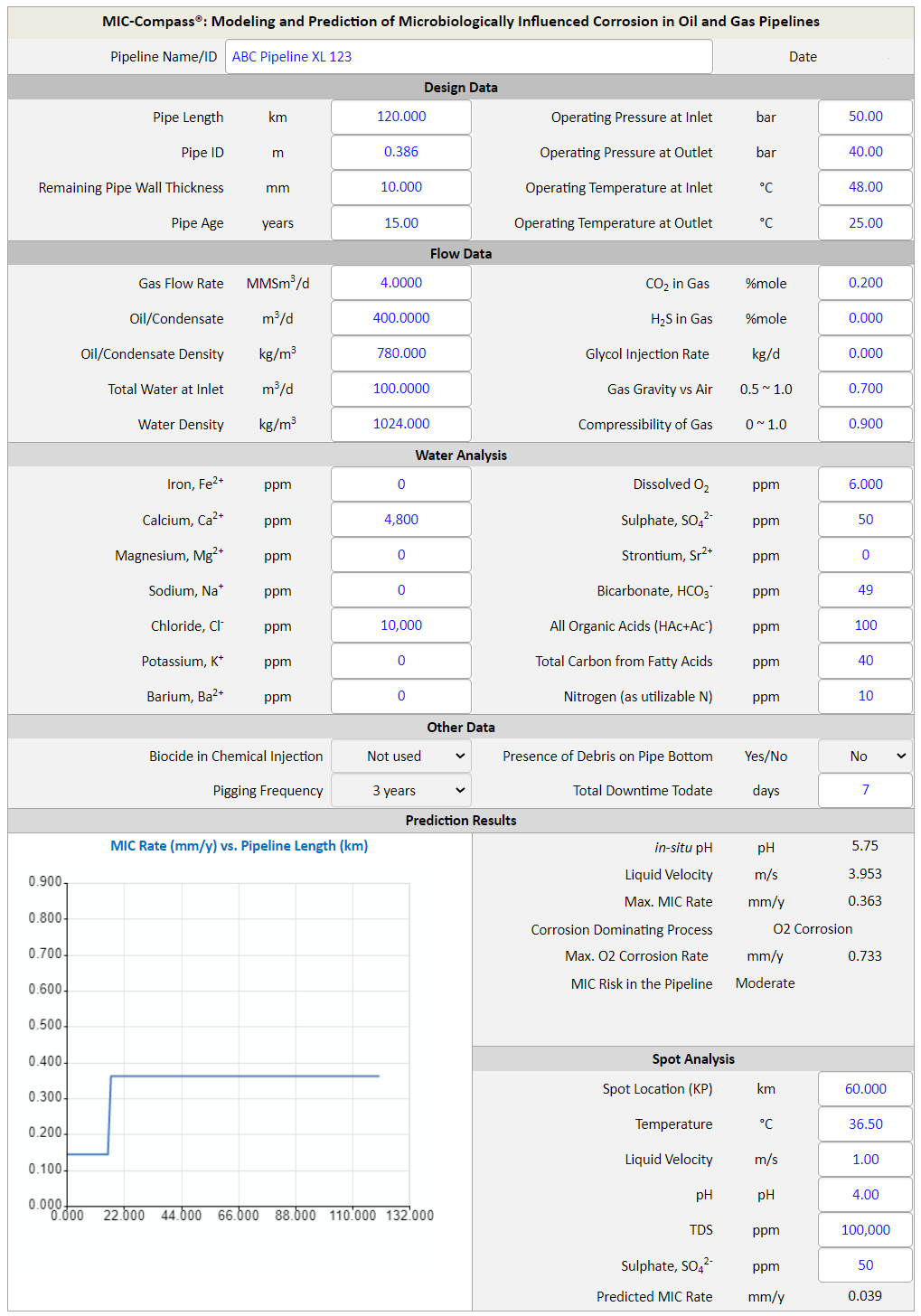|
|
|
|
• Galvanic • Crevice • Pitting • Intergranular • MIC • SCC • HB-HE-HIC • SSC • LME • Fatigue • Erosion • Fretting • Stray Current • Index |
|
Different Types of Corrosion
|
|
Microbiologically Influenced Corrosion (MIC) |
|
|
Recognition of Microbiologically Influenced Corrosion (MIC) |
|
|
There are about a dozen of bacteria known to cause microbiologically influenced corrosion of carbon steels, stainless steels, aluminum alloys and copper alloys in waters and soils with pH 4~9 and temperature 10oC~50oC.
These bacteria can be broadly classified as aerobic (requires oxygen to become active) or anaerobic (oxygen is toxic to the bacteria). Sulphate reducing bacteria (SRB) is anaerobic and is responsible for most instances of accelerated corrosion damages to ships and offshore steel structures. Iron and manganese oxidizing bacteria are aerobic and are frequently associated with accelerated pitting attacks on stainless steels at welds.
Many industries are affected by Microbiologically influenced corrosion (MIC):
Positive identification of microbiologically influenced corrosion requires chemical, biological and metallurgical analysis of the waters, soils and the metal samples.
|
|
|
Mechanisms of Microbiologically Influenced Corrosion (MIC) |
|
|
What causes Microbiologically Influenced Corrosion (MIC)? Microbiologically influenced corrosion is caused by specific genera of bacteria which feed on nutrients and other elements found in waters and soils. Sea water is a primary source of sulphate reducing bacteria (SRB). The biological activities modify the local chemistry (acid-producing) and render it more corrosive to the metals. For example, iron-oxidizing bacteria can perforate a 5mm thick 316 stainless steel tank in just over a month!
|
|
|
Prevention of Microbiologically Influenced Corrosion (MIC) |
|
|
How to prevent Microbiologically Influenced Corrosion (MIC)? Microbiologically influenced corrosion, or microbial corrosion or biological corrosion can be prevented through a number of methods:
|
|
|
Modeling and Prediction of Microbiologically Influenced Corrosion
MIC-Compass is the only device and OS independent software tool on the market for the prediction and modeling of microbiologically influenced corrosion (MIC) in oil and gas pipelines. Pipeline engineers, consultants, operation personnel, maintenance and inspection engineers can quickly assess the MIC risk, identify the dominating corrosion process in the pipeline (be it MIC or other types of corrosion such as CO2 corrosion, H2S corrosion, CO2-H2S mixed corrosion, and oxygen corrosion), and determine the corrosion rates under the prevailing operating conditions. MIC-Compass works on any device running any OS without the need to install or download anything.
The presence of bacteria in the water/deposit samples collected from a pipeline does not necessarily mean that MIC will occur in the pipeline and the absence of bacteria in the water/deposit samples doe not necessarily mean that MIC will not occur in the pipeline. There is no single factor that can trigger the initiation of MIC. The initiation and the growth rate of MIC are determined by a number of factors working in synergy:
Figures below demonstrate the operation of MIC-Compass. MIC-Compass has a built-in in-siu pH calculator that determines the in-situ pH under the prevailing operating temperature and pressure. The pH reported from water analysis conducted by testing labs at room temperature and pressure is not the "in-situ" pH. It is the "in-situ" pH that matters in MIC and other types of corrosion such as CO2 corrosion in oil and gas pipelines.
Figure 1 MIC-Compass Predicts the MIC risk and the corrosion rate in oil and gas pipelines
Based on the users' inputs of the prevailing operating conditions, MIC-Compass assesses the critical conditions for microbiologically influenced corrosion and other different types of corrosion, and determines the dominating corrosion process in the pipeline. The prediction results include the following:
Figure 2 MIC-Compass assesses the critical conditions for microbiologically influenced corrosion. No water, no corrosion!
Using the "Spot Analysis" function, users can quickly assess the MIC rate at low points along a pipeline where water drop out may occur. Under the prevailing operating conditions in Figure 2 above, liquid water is generally not expected in the pipeline as the gas phase is under-saturated with water. However, at river crossings or some low points along the pipeline length, water drop out may occur. MIC-Compass gives users the power to assess the what-if scenarios.
Figure 3 MIC-Compass predicts that carbon dioxide corrosion is the corrosion dominating process under the prevailing operating conditions.
Under the prevailing operating conditions in Figure 3, MIC-Compass identifies CO2 corrosion as the dominating corrosion process and the maximum CO2 corrosion rate in the pipeline is 0.528 mm/y while the MIC growth rate is predicted to be 0.215 mm/y. The spot analysis at the user selected pipeline location gives a MIC growth rate of 0.799 mm/y.
Figure 4 MIC-Compass predicts oxygen corrosion is the corrosion dominating process under the prevailing operating conditions.
Under the prevailing operating conditions in Figure 4 above, MIC-Compass identifies oxygen corrosion as the dominating corrosion process and the maximum O2 corrosion rate is 0.733 mm/y while the maximum MIC growth rate is 0.363 mm/y.
MIC-Compass is a powerful software tool for internal corrosion direct assessment and pipeline integrity management. Both prevailing and historical pipeline operating data can be used to model and predict the growth rates of microbiologically influenced corrosion and other different type of corrosion mechanisms (CO2 corrosion, H2S corrosion, CO2-H2S mixed corrosion, O2 corrosion) in oil and gas pipelines.
Click here to contact us for licensing details and experience the power of MIC-Compass. |
|
|
For more details on Microbiologically Influenced Corrosion (MIC) |
|
|
Where can I learn more about Microbiologically Influenced Corrosion (MIC)? More details on microbiologically influenced corrosion or biological corrosion are included in the following corrosion short courses which you can take as in-house training courses, course-on-demand, online courses or distance learning courses:
If you require corrosion expert witness or corrosion consulting service on microbiologically influenced corrosion, our NACE certified Corrosion Specialist is able to help. Contact us for a quote. |
|
|
Home | Subject Index | Contact Us | PDF |
Copyright © 1995-2025.. All rights reserved. |
